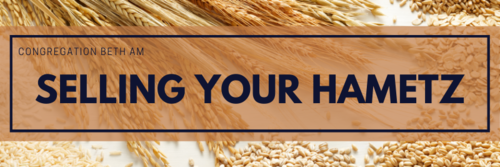Search for Hametz
Search for Hametz
One of the most significant observances related to Pesah involves the removal of hametz from our homes. This commemorates the fact that the Jews leaving Egypt were in a hurry and did not have time to let their bread rise. It is also a symbolic way of removing the "puffiness" (arrogance, pride) from our souls.
Hametz includes anything made from the five major grains (wheat, rye, barley, oats and spelt) that has not been completely cooked within 18 minutes after coming into contact with water. Orthodox Jews of Ashkenazic background also avoid rice, corn, peanuts, and legumes (beans) as if they were hametz. All of these items are commonly used to make bread, thus use of them was prohibited to avoid any confusion. Such additional items are referred to as "kitniyot."
We may not eat hametz during Pesah; we may not even own it or derive benefit from it. We may not even feed it to our pets or cattle. All hametz, including utensils used to cook hametz, must either be disposed of or sold to a non-Jew (they can be repurchased after the holiday). Pets' diets must be changed for the holiday, or the pets must be sold to a non-Jew (like the food and utensils, the pets can be repurchased after the holiday ends). From the gentile's perspective, the purchase functions much like the buying and selling of futures on the stock market: even though he does not take physical possession of the goods, his temporary legal ownership of those goods is very real and potentially profitable.
The process of cleaning the home of all hametz in preparation for Pesah is an enormous task. To do it right, you must prepare for several weeks and spend several days scrubbing everything down, going over the edges of your stove and fridge with a toothpick and a Q-tip, using foil or shelf-liner to cover all surfaces that come in contact with hametz, etc., etc. After the cleaning is completed, the morning before the seder, a formal search of the house for hametz is undertaken, and any remaining hametz is burned.
The grain product we eat during Pesah is called matzah. Matzah is unleavened bread, made simply from flour and water and cooked very quickly. This is the bread that the Jews made for their flight from Egypt. We have come up with many inventive ways to use matzah; it is available in a variety of textures for cooking: matzah flour (finely ground for cakes and cookies), matzah meal (coarsely ground, used as a bread crumb substitute), matzah farfel (little chunks, a noodle or bread cube substitute), and full-sized matzahot (about 10 inches square, a bread substitute).
Selling Your Hametz Form: Due April 21st | 11pm
Thu, April 18 2024
10 Nisan 5784
Passover Schedule
Sunday, April 21st
Search for Hametz
Monday, April 22nd
Erev Pesah
CBA Office Closed
Siyyum BeHorim Service:
Fast of the First Born
6:45 am | Lizerbram Family Sanctuary
Selling Your Hametz
1st Night Passover Seder
Tuesday, April 23rd
CBA Office Closed
Pesah Service
9:30 am | Lizerbram Family Sactuary
(virtual + in-person options)
2nd Night Passover Seder
Wednesday, April 24th
CBA Office Closed
Pesah Service
9:30 am | Lizerbram Family Sactuary
(virtual + in-person options)
Monday, April 29th
CBA Office Closed
Pesah Service
9:30 am | Lizerbram Family Sactuary
(virtual + in-person options)
Tuesday, April 30th
CBA Office Closed
Pesah & Yizkor Service
9:30 am | Lizerbram Family Sactuary
(virtual + in-person options)







